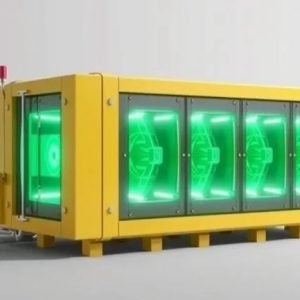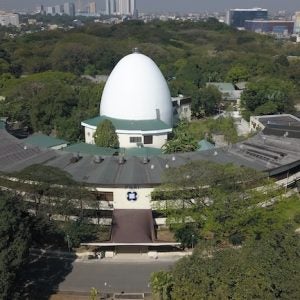The climate for nuclear power in the USA has not looked more positive for 30 years, the infamous period since the last order of a new reactor. The most significant reasons for the construction hiatus were of course post-Three Mile Island, post-Chernobyl safety fears and the siting problems they caused, which led to unacceptable economic uncertainties. The low price of natural gas didn’t help either, and only now are nuclear’s low-carbon benefits becoming apparent to the general public.
Speaking recently, Nuclear Regulatory Commission (NRC) chairman Nils Diaz said that there should be at least one good result from the hiatus experience: “Everyone today should be better prepared.” And they are. The US industry has always enjoyed presidential support and much effort has been made in Washington to simplify the business of getting a new power reactor built.
In the 1980s the NRC took steps to streamline the licensing system, developing the framework for a one-step process (combined construction and operation), instead of the former two-step process (construction, then operation). Crucially, this removes the fear that a plant could be built, but then be found unacceptable for operation – a worst-case financial scenario. But the new process has not yet been tested, and in November 2003 the Department of Energy (DoE) offered financial support to those utilities, or consortia of utilities and reactor vendors that make the first three applications as part of its Nuclear Power 2010 programme, meant to maintain nuclear’s 20% share of US electricity generation.
A number of consortia materialised in response consisting of the biggest operators in the USA and international reactor vendors. Their activity was fuelled by president George Bush’s Energy Policy Act, which brought in new legislation to introduce tax credits for the first 6000MWe of new nuclear capacity. The act also enabled the DoE to provide loan guarantees and created a fund to reduce a constructing utility’s financial exposure to planning and litigation delays. The acceptance by the NRC of early site permit (ESP) applications, whereby a potential constructor could establish the validity of a site for a new reactor far in advance of an actual commitment to build, has further streamlined the process.
The DoE has already agreed to co-fund one application from the NuStart consortium and one by a Dominion-led group and a decision by the end of 2005 was expected on the final subsidised project. Companies reportedly requesting the funding include: Southern Nuclear Operating Company, Constellation Energy, Progress Energy and Duke Energy.
UniStar
UniStar Nuclear is one of the strongest prospects in the new US market. Its plan to deploy a fleet of standardised US EPRs has developed with the announcement of its intention to file for an ESP for either Calvert Cliffs or Nine Mile Point in 2007 and a combined construction and operating licence (COL) in 2008.
UniStar is a joint venture between Constellation Energy and Areva’s US subsidiary, Areva Inc, which is making modifications to the EPR design for conditions in the USA – the main difference being the need to output at 60Hz instead of 50Hz. Areva Inc’s 200-strong design team hopes to submit the standardised US EPR to the NRC for design certification (DC) by the end of 2007. Once the NRC has digested the DC, ESP and COL, it is hoped the first UniStar plant could enter service in 2015.
UniStar’s grand plan is to have a fleet of US EPRs across the country boasting a very high degree of standardisation, all constructed by Areva Inc and operated by Constellation. Michael Wallace, Constellation’s executive vice president, said that UniStar’s first COL application would serve as a base for all future orders, avoiding replication in subsequent applications which would nevertheless have to include a site-specific component.
Constellation’s involvement in UniStar and consequent marriage to US EPR technology has ruled out the use of its sites by the NuStart consortium.
Progress Energy
Progress Energy announced on 1 November its intention to apply for two dual-unit COLs complete with environmental studies in early 2008. It hopes to begin construction in 2010, and to have the first of four new reactors under commercial operation in 2015.
The company has said that the American states it is considering include North Carolina and South Carolina for one pair of units, and Florida for the other. Progress part-owns and operates the Brunswick and Harris plants in North
Carolina, and Crystal River in Florida. It also wholly owns and operates the HB Robinson plant in South Carolina but Garry Miller, Progress’ manager for COL applications, said greenfield sites in those states were also under consideration.
Progress’ announcement to the NRC also stated that the company expects to have chosen both a site and reactor vendor by the end of 2005. Technology under consideration is the US EPR, ESBWR and AP1000. Miller said that the same design would be used at both sites, barring specificities, to gain as much as possible from standardisation.
NuStart
Between its members, the NuStart consortium generates two thirds of US nuclear power. The consortium consists of Constellation, Duke Energy, EdF International North America, Entergy Nuclear, Exelon Generation, Florida Power & Light, Progress Energy, Southern Company, and TVA along with the vendors General Electric (GE) and Westinghouse putting forward their ESBWR and AP1000 designs.
NuStart is one of the original COL consortia, making the completion of design challenges and testing the new licensing process part of its core plan. Its goal is to position both GE and Westinghouse to support plant construction projects by any of the NuStart members.
The group is preparing to apply for one COL based on an ESBWR at Entergy’s Grand Gulf site, and another based on a AP1000 at TVA’s Bellefonte site. The applications are expected in 2007/8.
GE and Westinghouse are committed to putting in the bulk of the consortium’s costs because the required design and engineering work, which the vendors will certainly gain huge benefits from, is the most costly and most important part of the overall project.
Each COL application is expected to take $50 million from the consortium’s $520 million budget, to which the DoE is contributing. Marilyn Kray, of Exelon and NuStart, told NEI that although pre-COL design and engineering work for both applications is cost-shared with the DoE, the department has only so far agreed to cost-share one COL’s post-application engineering. The consortium has applied to the department to have both COL’s fully cost-shared, but has not received a decision yet. “In the event that additional funding is not approved, a decision will be made at that time as to which of the two prepared COLs will be submitted,” she said.
Tennessee Valley Authority
As well as being an important member of NuStart, TVA leads its own consortium consisting of Bechtel, GE, Global Nuclear Fuel-Americas, Toshiba and USEC which has been studying the possibility of new build at Bellefonte. The site is attractive: TVA began construction of two PWRs there
during the late 1980s and is thought that some buildings, including cooling towers could be re-used. The TVA consortium recently completed a study into constructing two GE ABWRs on the site and found that it could be done in 40 months at a cost of $1611/kWe (at 1371MWe) and $1535/kWe (at 1465MWe). Three ABWRs are already in operation in Japan (Hamaoka 5 and Kashiwazaki-Kariwa 6 and 7) and the NRC granted DC in 1997. However, a Nucleonics Week report stated that TVA has rejected the proposal partly on the grounds that the reactors would have been the only two of their kind in the USA.
As noted above, Bellefonte has been selected for a probable AP1000 COL application by NuStart, so the DoE’s decision on NuStart’s funding could be a crucial factor in what actually gets built at the site. TVA is sure to want the site to be productive – partial construction and subsequent fruitless maintenance has cost it $4 billion.
Entergy
Entergy’s Grand Gulf site will be the focus of a COL application as part of the NuStart project, but the company will also make its own application for River Bend based around the ESBWR. Entergy’s focus would be on its NuStart Grand Gulf commitments – the River Bend application would come one or two months later in 2007/8 if at all. Dan Keuter, vice president of business development, said the decision on whether to pursue one or two applications has not yet been made. Still, Keuter said that Entergy hopes to be one of “the first few” to receive a COL.
Dominion
The Dominion-led consortium originally included AECL, Bechtel, GE Energy and Hitachi America. The group opted for GE’s 1550MWe ESBWR early this year after discussions with the NRC indicated that AECL’s ACR700 would take longer to gain design certification. That choice meant the ejection of AECL and Hitachi.
The remaining members (Dominion, GE and Bechtel) are putting together a COL for an ESBWR alongside the two PWRs at Dominion’s North Anna site.
Duke
Duke Energy has issued a request for quotation to vendors, asking them to submit bids for COL applications. Responses have not been made public and the company has said it would take a decision at the end of 2005.
Duke is thought to be considering 14 sites. The company owns: the three-unit Oconee plant, at Seneca, South Carolina; the two-unit M B McGuire plant at Cornelius in North Carolina; and 25% of both Catawba units in South Carolina.
Duke is also carrying out surveying work at the 2000-acre (800ha) Perkins site alongside the Yadkin River about 70km northeast of Charlotte, South Carolina. Plans for a plant there were scrapped in the early 1980s, as were plans for three PWRs at Cherokee, South Carolina.
The anticipated flurry of licence applications will certainly pose a serious challenge for the NRC. Speaking last month at the annual INPO (Institute of Nuclear Power Operations) CEO conference in Atlanta, Georgia, Diaz said he expects his colleagues to process a “top-notch COL application, with an approved site and a certified design, that clearly meets all regulatory requirements” in about three years, including adjudication. He continued to explain that the period for construction, subsequent inspections, tests, analyses and acceptance criteria, fuel loading and initial operations is estimated to be about another five years, giving an eight-year period from application to operation.
With one COL application expected in 2007 and between three to five in 2008, the NRC certainly has its work cut out. The body will be hiring about 350 new staff over the next period. Diaz told the INPO CEOs:
I envision the next few years as posing the most serious challenge the NRC and the industry have faced in a generation – a ‘rising tide’ of new responsibilities and difficult decisions that cover a wide spectrum of activities. Not the least of these is the potential necessity to resume new licensing activities after a long hiatus, with a new set of rules, players, reactors, construction methods, infrastructure and high national demands.






